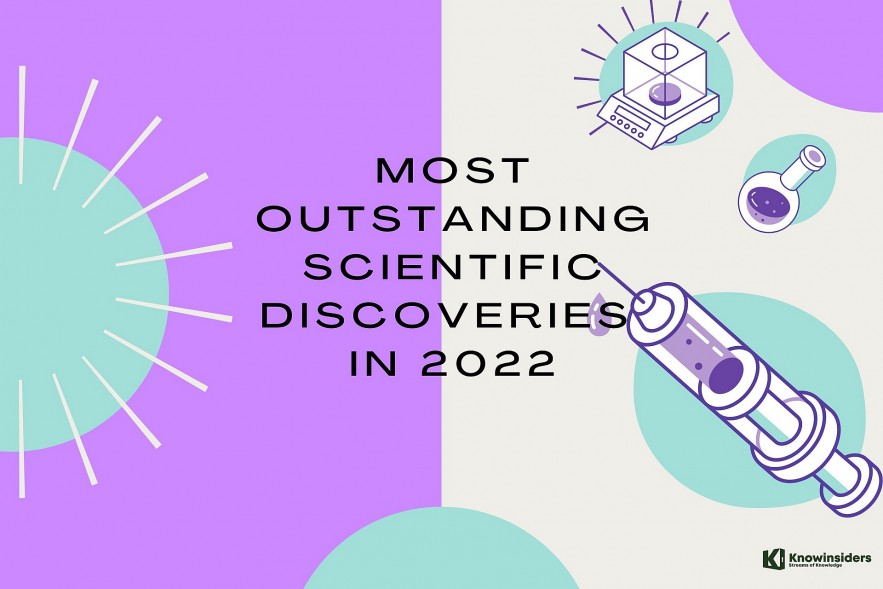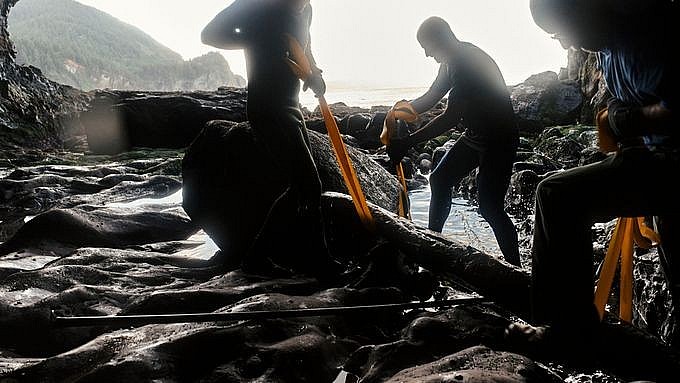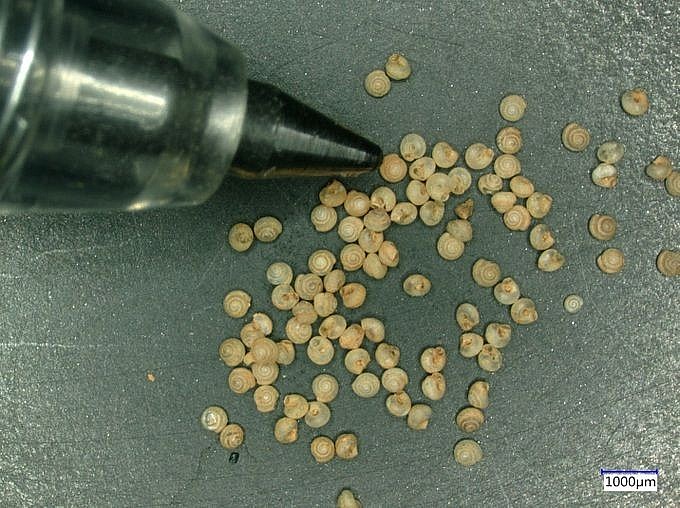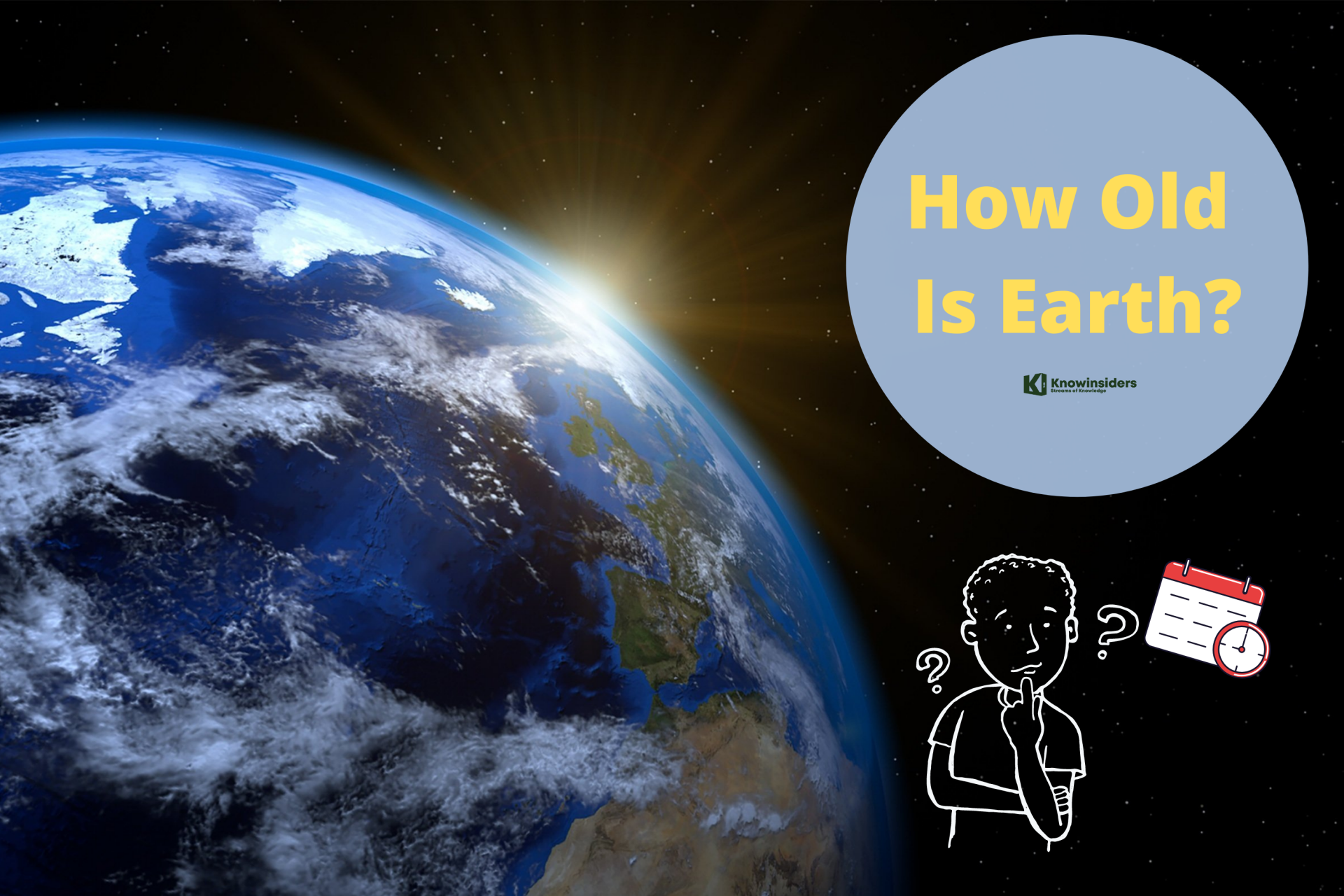Top 7 Most Outstanding Scientific Discoveries of Year
 |
| Top 7 Most Outstanding Scientific Discoveries In 2022. Photo KnowInsiders |
Every year, researchers around the world make great contributions to the accumulation and discovery of human knowledge. Paleontologists and archaeologists uncover traces of the past, revealing lost ecosystems and civilizations over time.
Astronomers seek to explain the mysteries of other worlds, while biologists and Earth scientists unravel the workings of our planet and the life it harbors.
Meanwhile medical researchers study the complexities of the human body and the diseases that threaten it, developing new tools to protect humanity.
The revelations that come from human’s relentless exploration and experimentation are always surprising and extraordinary. Let’s find out the most extraordinary scientific discoveries in 2022.
Top 7 Most Outstanding Scientific Discoveries In 2022
1. Fossils reveal a prehistoric rainforest
In January 2022, researchers revealed a site in Southeast Australia with rocks that gave a surprising glimpse of life in an ancient rainforest.
The fossils at McGraths Flat are between 11 million and 16 million years old, representing some of the only known tropical rainforest ecosystems of the Miocene including the existence of small, soft-bodied creatures that have been preserved in detail, spiders and fish with bellies full of mosquitoes.
Analyzing the fossils, researchers were even able to see the pores of animals that once absorbed carbon dioxide.
Because of the good conservation quality, we are able to look at these ecosystems in detail, said Matthew McCurry, a paleontologist at the Australian Institute of Museum Studies in Sydney and co-lead author of the study.
2. Perseverance rover explores Martian landscape
 |
NASA’s Perseverance Mars Rover has arrived at an ancient delta in Jezero Crater, one of the best places on the Red Planet to search for potential signs of ancient life. The delta is an area where scientists surmise that a river once flowed billions of years ago into a lake and deposited sediments in a fan shape.
Rachel Kronyak, a member of the Perseverance science operations team, guides the viewer through this Martian panorama and its intriguing sedimentary rocks. It’s the most detailed view ever returned from the Martian surface, consisting of 2.5 billion pixels and generated from 1,118 individual Mastcam-Z images. Those images were acquired on June 12, 13, 16, 17, and 20, 2022 (the 466th, 467th, 470th, 471st, and 474th Martian day, or sol, of Perseverance’s mission).
In this panorama, an area called Hogwallow Flats is visible, as is Skinner Ridge, where two rock core samples were taken.
The color enhancement in this image improves the visual contrast and accentuates color differences. This makes it easier for the science team to use their everyday experience to interpret the landscape.
3. Spanish 'ghost boat' discovered on Oregon coast
 |
The ruins of a ghost ship found in caves off the coast of Oregon - USA were identified as the legendary Spanish galleon ship, mysteriously missing 300 years ago.
In 1693, while sailing from the Philippines to Mexico, the Santo Cristo de Burgos was carrying Chinese beeswax, ceramics and silk when it veered off course and disappeared. A document from 1813 mentioned a Spanish shipwreck on Mount Neahkahnie in the area, but did not help identify the ship. But there's another mystery and reality: Unidentified beeswax blocked washed ashore in the 19th century.
Several pieces of Chinese porcelain were also collected by the fishermen, identified as porcelain from the Kangxi period. This indicates that they either belong to the Santo Cristo de Burgos and the other to the San Francisco Xavier that went missing in 1705.
READ MORE: Top 10 Universe’s Mysteries That Science Can’t Explain
4. Revive dead internal organs
 |
For the first time in medicine, scientists at Yale University, USA have revived the function of many organs of pigs including the brain, heart, liver and kidneys an hour after the animals died. Thousands of human organs are discarded every year because they are not immediately preserved, while we still face the shortage of these organs for treatment.
In the future, this research could help expand the viability of these organs in humans for organ transplantation.
The researchers performed cardiac arrest in pigs and left the carcasses for one hour before infusing OrganEx containing amino acids, vitamins, metabolites and 13 additional compounds into their bloodstream.
The team used assistive devices to circulate the mixture for six hours and noticed signs of revitalization in dying organs. Then heart cells started to beat, liver cells absorbed glucose from the blood and DNA repair was resumed.
However, more time is still needed for scientists to see if these organs are really healthy enough to be reintroduced into the body.
The team will transplant the revived organs into live pigs to see how well they work.
READ MORE: Top 10 Mysteries of Human Behaviour That Science Fails to Explain
5. Tonga volcano erupts - 500 times stronger than atomic bomb in Hiroshima
In January, an underground (undersea) volcano in the Kingdom of Tonga, known as Hunga Tonga-Hunga Ha'apai, caused an unprecedented eruption in recent decades.
The explosion triggered a global pressure wave and caused tsunamis.
Just before the volcanic dust settled, scientists raced to collect data on the strangeness of this eruption in the hope of being able to better understand the mechanism behind the explosion and the chain of effects.
 |
| Photo BBC |
Volcanologist Janine Krippner, who was on the Smithsonian's Global Volcano Program, said that everything about this eruption has been s far strange beyond scale and imagination.
The eruption was equivalent to 10 million tons of TNT (10 megatons of TNT), more than 500 times the destructive power of an atomic bomb, said James Garvin, a scientist at NASA's Goddard Space Flight Center.
The United States dropped the Japanese city of Hiroshima at the end of World War II.
According to the researchers, the eruption excavated millions of blocks of rock from the seabed, making it the largest volcanic explosion in a century.
The explosion also unleashed avalanches of hot ash and volcanic debris known as pyroclastic flows that ran along the seafloor for at least 80km.
6. The world's smallest snail species discovered in Vietnam and Laos
 |
While searching for animals that live underground in Laos and Vietnam, scientists stumbled across several new species of snails, two of which are smaller than any previously seen.
They named them "psammion" from the Ancient Greek word of "grain of sand". This species lives in the walls of caves in Vietnam and is only 0.6 mm in diameter.
The other snail was slightly larger and was excavated in a limestone canyon in Laos and named A. coprologos, the Greek word that means "gatherer".
7. Climate change is threatening our health
For decades, scientists have warned of impending risks of climate change on human and the environment.
 |
Some of the dangers we face have emerged this year, including a direct impact on human health.
According to a report by the United Nations Intergovernmental Panel on Climate Change, by 2100, three-quarters of the people on Earth could be permanently affected by high temperatures.
At the same time, humans also face increased lung damages from air pollution and more infectious diseases from blood-sucking animals like mosquitoes and ticks, as they spread to new areas.
The report's authors stress that the urgent need is to cut environmental emissions. Human need to learn how to adapt to a hotter world, before health threats arise and climate-related health problems worsen.
 Why the Sky is Blue - Scientific & Ancient Explaination Why the Sky is Blue - Scientific & Ancient Explaination One of the first questions a child often asks is "why is the sky blue?" Yet despite how popular this question is, there are many ... |
 Top 10 Universe’s Mysteries That Science Can’t Explain Top 10 Universe’s Mysteries That Science Can’t Explain Universe has many interesting facts, secrets and mysteries that human has not discovered yet. Here is 10 universe's mysteries that even scientists have a hard ... |
 How Old Is The Earth In Science, Bible How Old Is The Earth In Science, Bible Although the universe is thought to be about 13.77 billion years old, planet Earth is much younger than that. Scroll down to know how old ... |
























